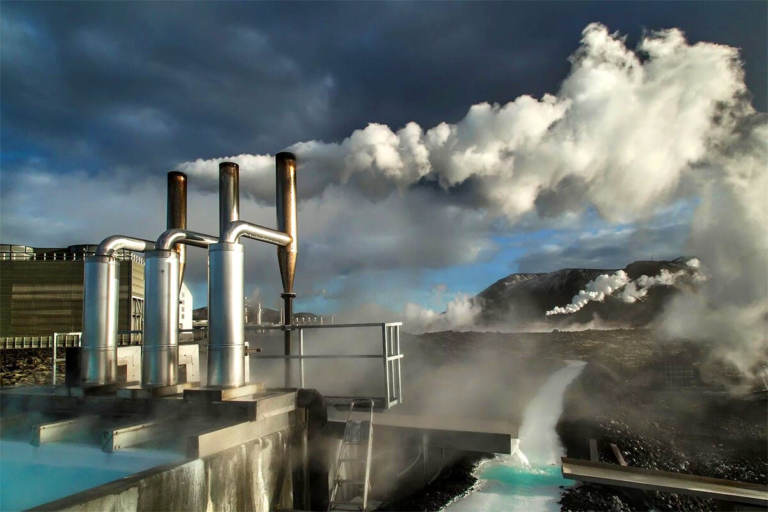As energy costs rise and the push for renewable energy grows, more Americans are exploring sustainable options. One of the most efficient and eco-friendly energy sources available today is geothermal energy. Whether you’re interested in how a geothermal energy power plant diagram works or how a geothermal heat pump hot water system can benefit your home, this guide has got you covered.
What Is Geothermal Energy?
Geothermal energy is heat derived from the Earth’s core. Unlike fossil fuels, it’s renewable and can provide both electricity and direct heating for residential and commercial use. The U.S. is a global leader in geothermal energy, with states like California, Nevada, and Utah harnessing this resource for power generation.
How a Geothermal Power Plant Works
Geothermal power plants use heat from beneath the Earth’s surface to generate electricity. Here’s a simplified breakdown of the process:
- Heat Extraction – Wells are drilled deep into the Earth to access hot water or steam.
- Energy Conversion – The heat is used to drive turbines that generate electricity.
- Reinjection – The cooled water is returned underground to sustain the cycle.
Geothermal Energy Power Plant Diagram
To better understand this process, a geothermal energy power plant diagram illustrates the key components involved:
- Production Wells: Extract hot water or steam.
- Turbines and Generators: Convert thermal energy into electricity.
- Cooling Towers and Reinjection Wells: Maintain system balance.
What Is a Geothermal Heat Pump?
While large-scale geothermal plants generate electricity, homeowners can benefit from geothermal energy too! A geothermal heat pump is an efficient system that uses underground temperatures to heat and cool homes. Unlike traditional HVAC systems, it transfers heat rather than generating it, leading to significant energy savings.
How Geothermal Heat Pumps Provide Hot Water
One of the biggest advantages of geothermal systems is their ability to provide geothermal heat pump hot water. Here’s how it works:
- Heat Capture: The heat pump absorbs warmth from the ground.
- Water Heating: Excess heat is transferred to the water supply.
- Storage & Use: The heated water is stored in a tank for home use.
This process significantly reduces energy consumption compared to conventional water heaters, making it an attractive choice for U.S. homeowners.
Benefits of Geothermal Energy for U.S. Homes
- Lower Energy Bills: Reduces heating and cooling costs by up to 70%.
- Environmentally Friendly: Produces minimal greenhouse gas emissions.
- Reliable & Sustainable: Works year-round with minimal maintenance.
- Government Incentives: Federal tax credits and state rebates help offset installation costs.
Is Geothermal Energy Right for Your Home?
If you’re considering switching to a geothermal system, here are some factors to keep in mind:
- Initial Cost vs. Long-Term Savings: While installation can be expensive, the savings over time make it a worthwhile investment.
- Climate Suitability: Ideal for many U.S. regions, especially where energy costs are high.
- Installation Requirements: Requires land for underground piping, but newer vertical loop systems work in smaller spaces.
Final Thoughts
Geothermal energy is more than just a buzzword—it’s a game changer for energy efficiency and sustainability. Whether you’re interested in understanding a geothermal energy power plant diagram or looking to install a geothermal heat pump hot water system, this technology offers long-term benefits for both homeowners and the environment.
